A wildlife refuge manager fortifies crocodile nesting turf in the Keys. A college historic preservation director defends treasured architecture in St. Augustine.
A Miami geologist warns of coastal ruin ahead. And a Jacksonville entrepreneur refuses to retreat from the threat of flooding.
Those are some of the climate-action heroes from around the state who are doing their part — large or small — to take action on rising seas, warming ecosystems and intensifying weather.
Their efforts underscore the risks of a warming planet for jobs, homes, roads, wildlife, spaceships and Florida's future.
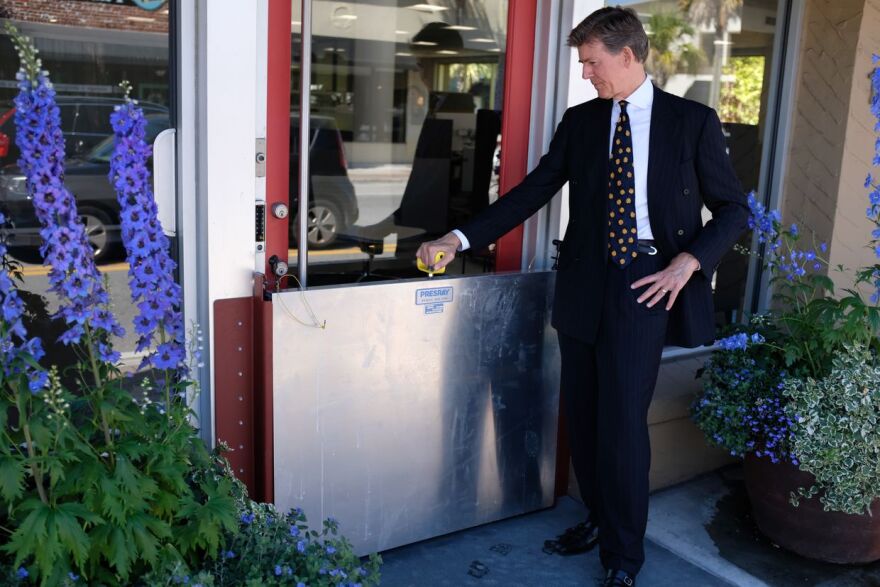
Jacksonville: E. Zimmermann Boulos
E. Zimmermann Boulos is more than he appears in a dark suit as the owner of Office Environments and Services.
He is a former FIFA soccer referee with office memorabilia from international matches and superstars.
And he is a self-taught warrior in climate adaptation. That term, for fighting the impacts of global warming, is not one the politically conservative businessman ever mentions.
He is simply determined to save his business and employees' livelihoods from flooding that threatens Jacksonville's San Marco neighborhood. "It does seem like it is getting worse," Zimmermann said.
His dad founded the office-interiors business in 1955. Since 1960, it has been on San Marco Boulevard, a short walk from where the St. Johns River turns to the Atlantic Ocean.
In 2016, Hurricane Matthew swelled the river onto the boulevard. In 2017, Hurricane Irma pushed the river into his building.
Zimmermann now espouses flood insurance, a disaster-recovery plan and a device becoming better known in Florida as similar in concept to but far more effective than sandbags — a door dam.
He had insurance, though not enough. He had a disaster plan, thanks to learning of the concept from a client. His staff, as a result, was on the job two days afterward in temporary warehouse space.
But mold, rust and sewage stench erupted in his building. Recovery was exhausting and depressing, and motivated him to fight back.
With specialized coatings and caulking, he had workers seal every surface, hole and crack in his building's exterior.
He purchased door dams made of aluminum plates and rubber gaskets that can lock into and seal off an entrance. There is one for the front and one for the loading bay. "I paid just shy of $10,000 for both," Zimmermann said of his door dams.
He expects to repel more than 2 feet of flooding on San Marco Boulevard.
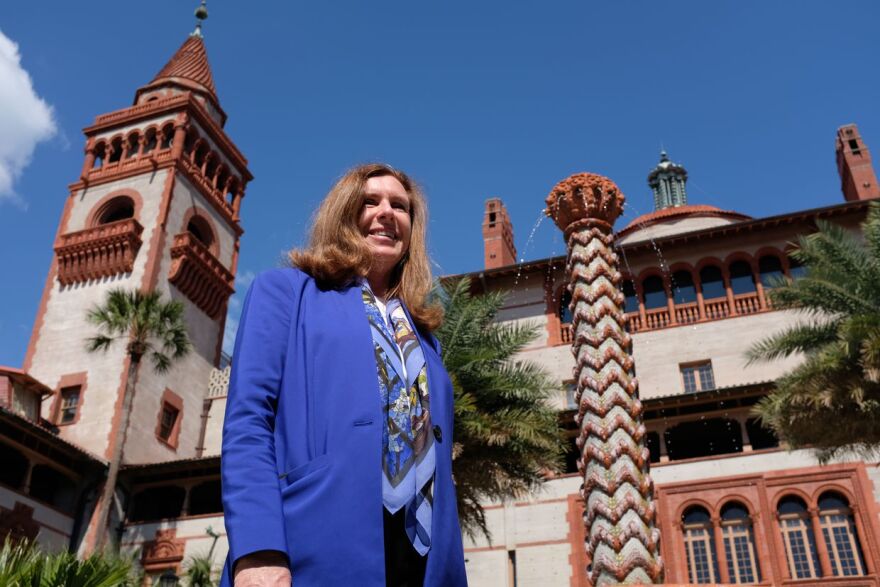
St. Augustine: Leslee Keys
One of Florida's treasures in the danger zone of rising sea levels is irreplaceable, an invaluable, 131-year-old National Historic Landmark.
It's the former Hotel Ponce de Leon in St. Augustine, a creation of railroader Henry Flagler as one of the luxurious resorts of the time.
"Everything in here that looks like gold, is gold," said Leslee Keys, director of the college's historic preservation.
It's her urgent and still-incomplete task to help determine strategies for protecting a massively constructed, unmovable building, now housing a residence hall, administrative offices and dining hall.
She has been immersing herself in know-how. In May, Keys co-chaired a conference of U.S. and international experts in St. Augustine: "Keeping History Above Water."
But there are no easy or readily apparent solutions, which makes the building a four-story metaphor for dozens of other historic structures in the city and for a significant part of Florida's coastal real estate.
Flagler built his hotel on filled swamp at sea level in a city closely embraced by the Atlantic Ocean. As previews, Hurricanes Matthew and Irma flooded part of the former hotel's ground floor.
"Do we let water go through the building or do we keep it away or some of both?" Keys said.
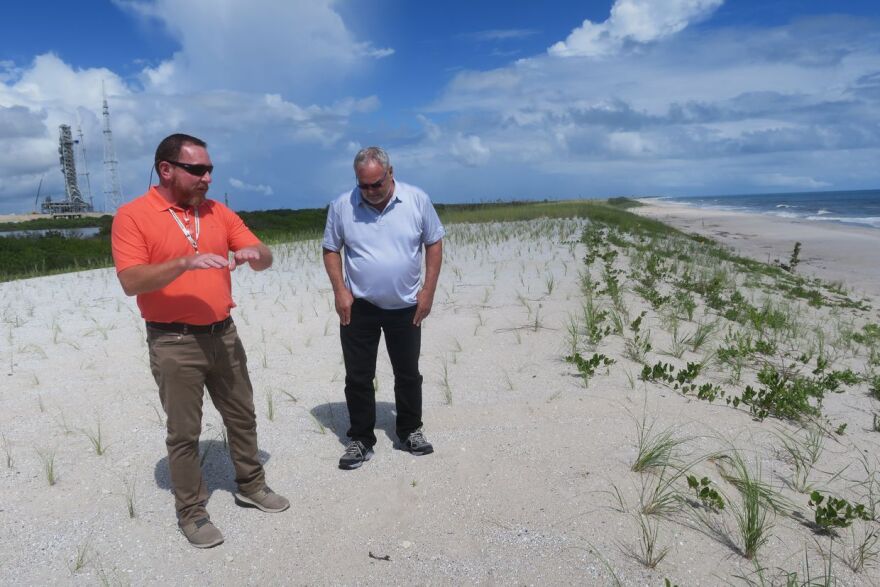
Kennedy Space Center: Don Dankert and Carlton Hall
Scientists Don Dankert and Dr. Carlton Hall are helping in overseeing the building of dunes to shield launch infrastructure close enough to the ocean to suffer from corrosive salt spray.
Of most concern are pads 39A, used previously by moon rockets and now SpaceX, and 39B, which NASA assigned for its Mars-and-beyond spacecraft.
NASA knows what's coming, having been at the forefront of climate research.
After Hurricane Sandy sailed by Florida in 2012, but still mauled the center's coast, "Sandy Dune" was sculpted with 90,000 cubic yards to be a mile long and 15 feet high.
The dune was planted with sea oats, sea grapes, grasses and other native vegetation.
Then came hurricanes Matthew in 2016 and Irma in 2017. Dankert and Hall expected the storms to eviscerate Sandy Dune. But "that dune really exceeded our expectations," Dankert said.
Success led to the construction of "Matthew Dune," with 220,000 cubic yards of sand 90 feet wide and 17 feet high and covering Sandy Dune. Nearly two miles have been completed and work starts soon on a final mile.
Already, the dune has been scribbled on with the tracks of gopher tortoise and loggerhead sea turtles.
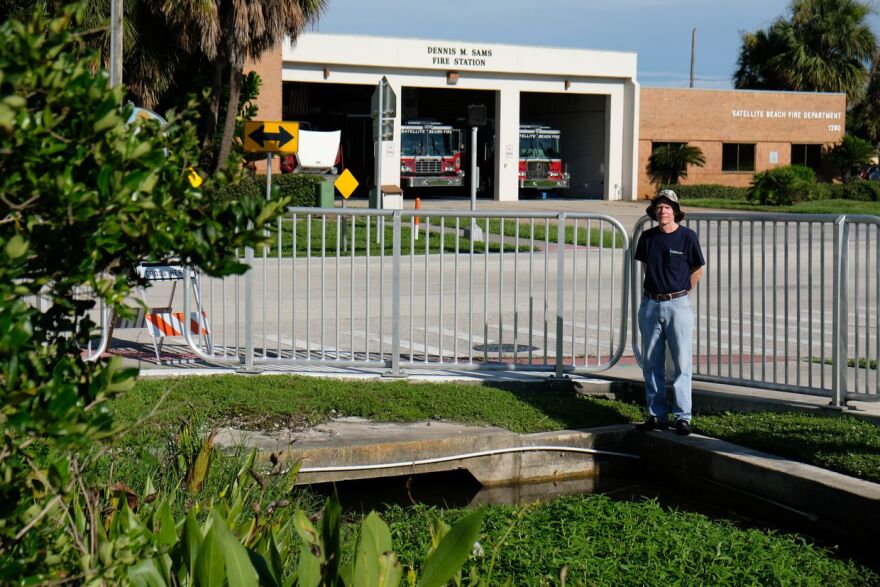
Satellite Beach: John Fergus
Among barrier-island communities of Brevard County, one is known for its early preparation for sea-level rise.
Satellite Beach, population 11,000, is across the Indian River from Melbourne.
"The city is taking this seriously even though we don't have the in-your-face problems of other cities," said John Fergus, a longtime community volunteer. "We are blessed in that we don't have a problem today. We have time to do some preparing so that when the time comes it is not an absolute crisis."
Satellite Beach's initiatives have been possible in part because of a culture of civic engagement. "I'm not what you call a tree hugger," Fergus said. "But I'm very sensitive to what's going on."
Fergus's undergraduate degree is in engineering, his master's in physics and Ph.D. in geological sciences. He was an officer at the Air Force Technical Applications Center at Patrick Air Force Base, monitoring nuclear-test treaties.
He credits efforts of others on behalf of the city, including Randall Parkinson, a Florida International University coastal geology professor focused on climate change, and Ken Lindeman, a Florida Institute of Technology professor of ocean engineering and marine sciences.
"We provide a technical resource that can be very useful and be very expensive if you don't have it free," Fergus said.
Satellite Beach took a deep dive over several years into stormwater analysis, comprehensive planning, precise mapping and pursuit of grants.
The result was figuring out risks, costs and courses of action far sooner than most Florida communities. Among concrete steps, the city is relocating its fire station to higher ground.
But Satellite Beach's overarching strategy de-emphasizes costly public-works projects, like those sea-rise defenses pursued in Southeast Florida, and focuses on a gradual but profound remedy.
"We aren't talking about sea walls and pumps," Fergus said. "We are focused on encouraging people to move out of harm's way."

Miami: Rod Braun
Harnessing nature as a buffer against nature is a concept drawing widespread attention.
Coastal protection is usually about seawalls, which are imperfect, have limited lifespans and neuter aquatic environments.
But a "living shoreline" deploys mangroves, seagrasses, oyster reefs and marsh to absorb or deflect flooding, and provide aquatic habitat.
"We need to make a business case for these solutions," said Rod Braun, Florida climate and coastal resilience program manager for The Nature Conservancy. "It's got to be a go-to solution whether for a county commissioner or a city engineer."
Of the same mind is the global insurance company Chubb, which last year gave the environmental group $1 million to demonstrate "nature-based" coastal protection.
Braun is now reviewing conceptual plans for possible sites in Miami-Dade County.
One is Miami's Morningside Park overlooking Biscayne Bay. Braun described the park's makeshift waterfront of concrete riprap, mangroves and open space as readily upgraded into a living shoreline.
In eventually selecting a site, Braun expects to create an exhibit where visitors can study components that may apply to their circumstances.
"I hear often from people, asking, 'We know it makes sense but how do we do it?'" Braun said.
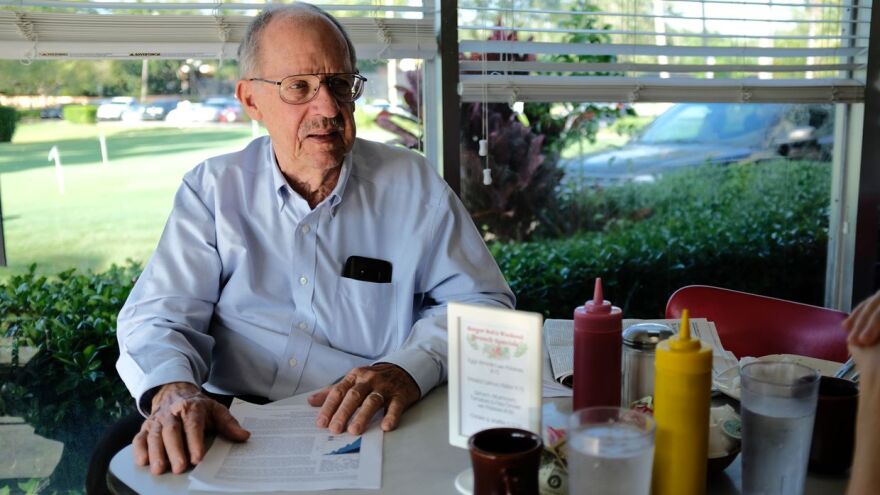
Coral Gables: Harold R. Wanless
Nearly a quarter-century ago, University of Miami geology professor Harold R. Wanless was quoted in a Miami Herald story.
"Global warming is real and is already having an effect," Wanless said in 1995. "We are at the beginning of a catastrophic revolution for low-lying and coastal areas."
Before then and since, Wanless' message has been unwavering. He has addressed every government leader, group and reporter possible with an unflinching demeanor and chilling outlook. Official projections dramatically understate global warming and sea-level rise, he contends.
Still at the university as a professor of geography, Wanless knows his outlook is dark and even terrifying. But communities need to know they have critical choices, he said.
They can move away permanently in an organized fashion, minimizing trauma to their assets and cleaning up landfills, power plants and industrial waste before they are submerged.
Otherwise, enormously costly efforts to elevate sea walls, streets and stormwater systems are distracting people from the reality that significant portions of coastal Florida inexorably will be swallowed by rising seas, he said.
Wanless cited the Miami Forever bond initiative that voters approved two years ago for climate resiliency measures.
"How can you be resilient when you are underwater," he said. "They call it 'Miami Forever.' It's really Miami for a little bit longer."
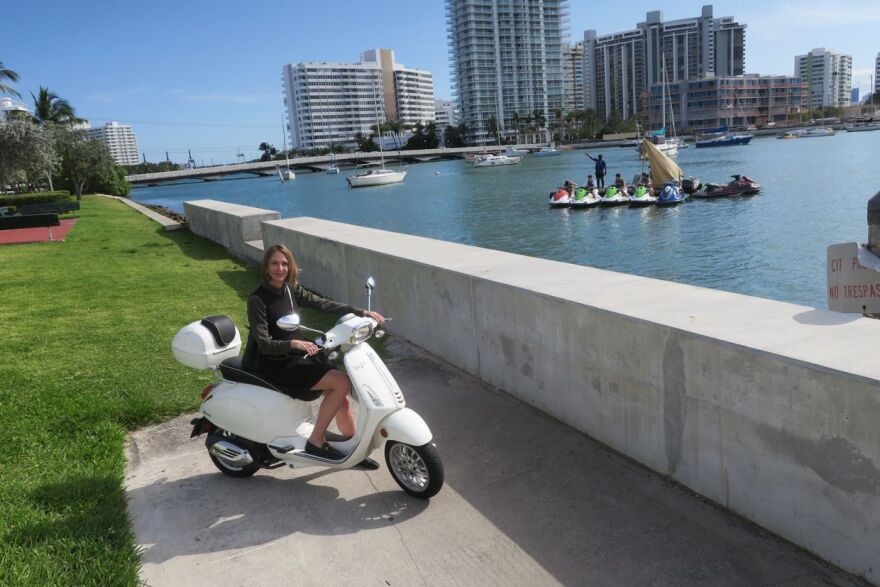
Miami Beach: Elizabeth Wheaton
Elizabeth Wheaton is the sustainability director for the city "on the forefront of dealing with climate change."
That would be Miami Beach, an island city between Miami and the Atlantic and known as an early victim of saltwater, tidal flooding that occurs on sunny days and not associated with rainfall.
"We're trying to change the conversation from 'we're all doomed, we're sinking, we're not going to be here in 20 years' to 'OK, there are a lot of people who are working on this,'" Wheaton said.
The city has a brand, "Miami Beach Rising Above," for a $650 million "resilience journey" of installing enormous drainpipes, powerful pumps, raising roads and bolstering sea walls. Residents are covering much of the cost.
In the Sunset Harbour neighborhood of Miami Beach's South Beach, several business-district roads have been raised by as much as 2 feet.
That left adjoining buildings at a lower elevation than the new roads. So the sidewalks adjoining the buildings were split. One half remained at the level of businesses, while the other half was raised along with the adjoining road.
Wheaton pointed out an example of that conversion, where flooding was prevented 13 times in the first year. "That was 13 times that businesses weren't closed and the street wasn't impassable."
“There no solution where we can say, ‘Okay, we are done.’ This is going to be our way of life moving forward.”
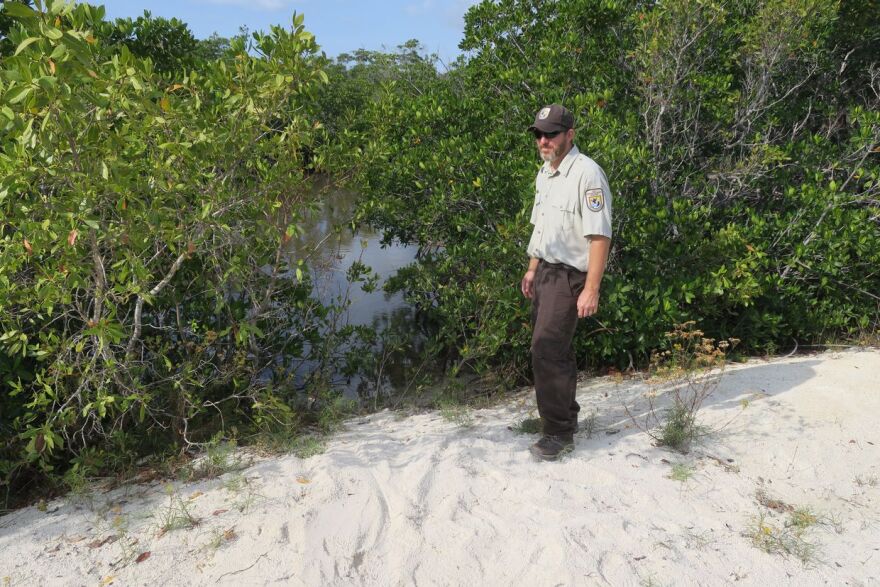
North Key Largo: Jeremy Dixon
Jeremy Dixon has much to worry about as manager of the 6,700-acre Crocodile Lake National Wildlife Refuge.
Endangered woodrats and cotton mice are being eaten by feral cats, and Burmese pythons — biological vacuum cleaners — are massing nearby in the Everglades.
As for the park's namesake, crocodiles, their nesting areas are at the edge of rising waters.
Limited with staff, Dixon during the past few years has enlisted dozens of volunteers to rebuild and raise the height of crocodile nesting ground.
"I never knew that so many people would want to shovel sand," Dixon said.
When federal authorities acquired the low-lying refuge land in the early 1980s, it came with a network of canals. The dredging of those canals had piled up muck and rocky soil called marl.
Those mounds now provide some of the most important nesting turf for American crocodiles in the U.S. But they are eroding, crumbling back into canals and mangroves closely connected to the Atlantic Ocean.
From a barge and canoes, volunteers carried soil to replenish nesting sites.
"I call it 'field of dreams ecology,'" Dixon said. "Build it and they will come."

Key Largo: Rhonda Haag
Rhonda Haag has worked for three decades for local governments, the state's environmental agency and the regional water authority.
Her career has positioned Haag for her current task, sparing local roads in the Keys from drowning. "I could retire," she said. "But this is too fascinating and important."
As the county's sustainability director, Haag oversees evaluation and protection of 300 miles of roads.
On several days a year, high-tide "nuisance" flooding closes some of that roadway. But in 2015 and 2016, roads in Key Largo were submerged for weeks.
"When you have 16 inches of saltwater on your road for that long, it's no longer a nuisance," Haag said.
The flooding was a preview of what "the county can expect as sea levels continue to rise," according to a 2017 investigation by Monroe County.
Raising a road requires widening it, which may require property purchases. A wider road means more stormwater, which may require bigger ponds. A road’s base may have to be replaced in order to withstand seawater inundation.
The potential price per mile varies from $3 million to $10 million.
Monroe County may have to look at abandoning some roads, Haag said, and perhaps rely more on boats or even tram systems.
"I feel confident we will continue to live here in the Keys. But that may mean we have to learn to live differently with water."
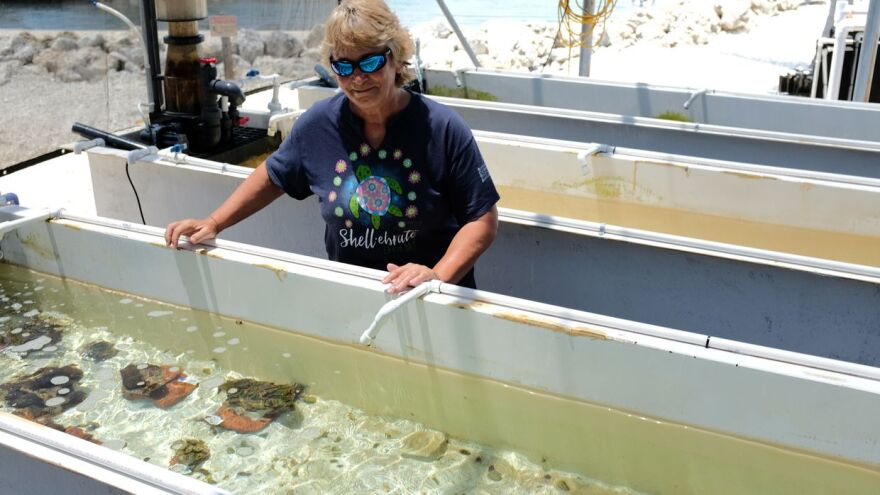
Layton: Cynthia Lewis
Dr. Cynthia Lewis is literally at the helm of rescuing of Florida corals.
She is the deputy director at the Keys Marine Lab in Layton. It is part of the Florida Institute of Oceanography, a collaboration of the state's universities.
Since 2014, a malady called Stony Coral Tissue Loss Disease has been killing corals from the Treasure Coast to Key West.
"Climate is changing more rapidly than coral can," Lewis said. "They are already living at the limit of their thermal tolerance, which means that for whatever the diseases, their resistance is compromised. It's death by 1,000 cuts."
Layton is halfway down the Keys and the waters there are familiar to Lewis. It's where she conducted field studies on the way to a Ph.D. She has been the lab's lead scientist for a decade.
She also is a boat captain and diver, hosting and guiding researchers in a large and collaborative sprint to collect dozens of coral species ahead of the disease.
Coral specimens are being sent to zoos and aquariums across the nation for safe-keeping and propagation.
"Hopefully, there is something hiding in their DNA that perhaps gives the ability to resist a changing climate," Lewis said. "We are looking for the best of the best in their genetic diversity."
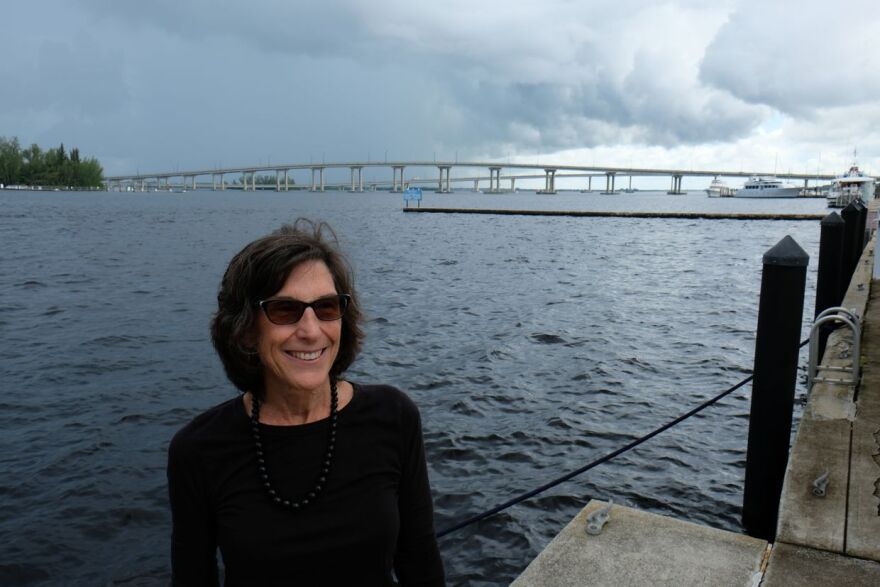
Fort Myers: Holley Rauen
A retired midwife and public-health nurse, Holley Rauen describes herself as a "seasoned social justice and environmental advocate."
"My bigger persona is as an activist," said Rauen, who has protested for peace in Nicaragua, LGBTQ rights and prevention of human trafficking. She also conducts sacred water ceremonies.
Rauen now fights climate change through advocacy in her community of Fort Myers. How she got there was essential Rauen.
With a Unitarian Church friend, she connected with the Pachamama Alliance, a global movement promoting a sustainable future. Through that group, Rauen and her friend enlisted 30 residents for climate training on five Saturdays earlier this year.
They studied Drawdown: The Most Comprehensive Plan Ever Proposed to Reverse Global Warming, a widely adopted book, and narrowed their focus to coastal wetlands, which store tremendous amounts of carbon.
"I immediately joined the Calusa Waterkeeper," Rauen said of the local, nonprofit group championing the Caloosahatchee River.
"I feel like my mission is to help people plug into their passion," Rauen said. "Because they can become overwhelmed when they talk about climate change."
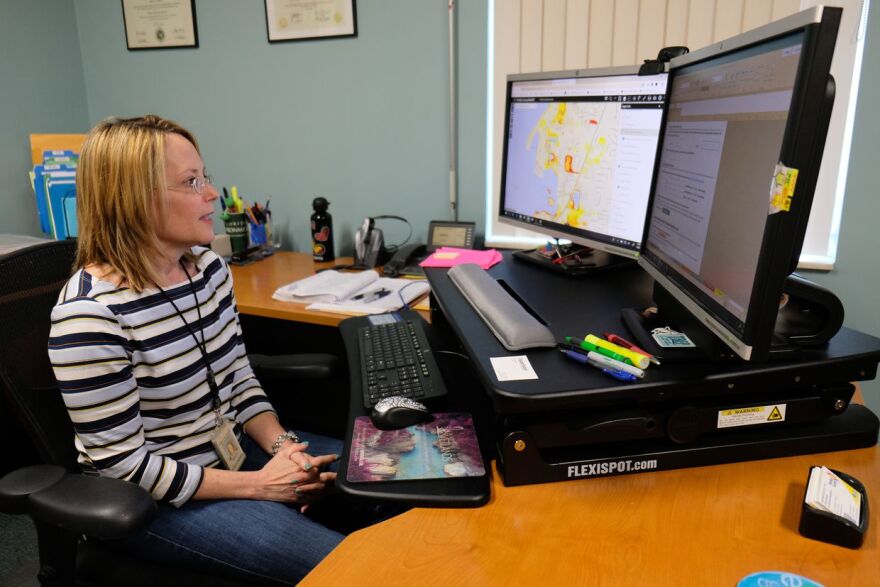
Clearwater: Kelli Hammer Levy
Many mapping tools depict rising tides in years to come. But for local governments spending tax dollars on public works, visualizing what will be submerged by seawater isn't enough.
Bridges, sewer lines, evacuation routes and other infrastructure are linked – changes to one could protect or endanger another.
No sea-rise tool considered that very well until Kelli Hammer Levy, Pinellas County environmental director, created one.
Becoming a go-to for everything from a park restroom to a fire station, the mapping tool, for now, has a government-speak title: "Guidance for Incorporating Sea Level Rise into Capital Planning in Pinellas County."
"I was told to figure out a way to incorporate sea-level rise into our capital program," Levy said. The tool has had many upgrades and an overhaul into a web-based format for public access without charge is in the works.
It's required for county projects and recommended for other development.
"The tool isn't there to tell you what to do," Levy said. "It's to document the exposure, the sensitivity, the vulnerability and the risk associated with sea-level rise and storm surge at the project location. It's getting to you to ask the questions that you need to ask to make informed decisions."
"I want people 50 to 60 to 70 years from now to go, ‘Boy, those folks were forward-thinking.’"

Cedar Key: Mike Allen
The Nature Coast Biological Station is a University of Florida outpost perched on islands known as Cedar Key. The well-being of Florida’s Big Bend coast — its oyster reefs, saltmarsh and seagrass — is on vivid display there.
"Is the sea level rising? Absolutely," said station director Mike Allen. "The data are unequivocal on that. The sea level is rising and the temperature is rising. Are there changes in the marine ecosystem? Absolutely. There's a difference in fish communities, a difference in plants and we are seeing all of those."
A fish scientist pursuing his own investigations, Allen also facilitates work by visiting researchers at the station. Increasingly, climate changes are defining the aquatic wilderness.
"Whether changes are good or bad, I'm hesitant to use those kinds of values," Allen said. "We are seeing a transition from salt marsh to mangroves. Both salt marsh and mangroves are essential and high-quality fish habitat. But they are different ecosystems and that's happening before our very eyes."
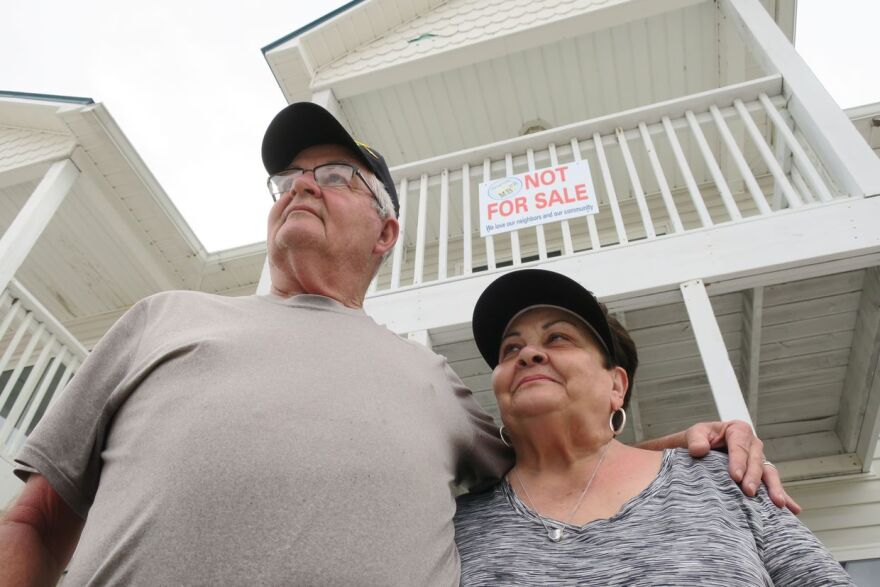
Mexico Beach: Parris and Murray families
Hurricane Michael crossed the Panhandle last year with a crushing storm surge and 160 mph winds. Afterward, it was gut-check time for Tom and Margaret Parris and son-in-law and daughter Rob and Kristi Murray.
Their getaway home was blown open but left standing, with a new view of the Gulf of Mexico beyond where neighbors perished.
As with many in Mexico Beach, and increasingly for Floridians along more than 1,300 miles of coastline, their choice was to leave or to remain as part of a community newly and keenly aware of climate risks.
"You could argue until the cows come home with people about whether climate change is real," Rob Murray said. "To me, it just feels like these big powerful storms are going to be more and more frequent and more and more intense."
They chose to rebuild because of friends, neighbors and small-town charm.
To remain means accepting tougher building codes and supporting overall community efforts, including in the form of rising tax bills, to defend against whatever comes next.
“I could see how people for a variety of reasons would walk away,” Murray said, whose family has paid for repairs out of pocket. “It would be quite easy — put up a for-sale sign and wash your hands of it.”
This story was produced in partnership with the Florida Climate Reporting Network, a multi-newsroom initiative founded by the Miami Herald, the South Florida Sun Sentinel, The Palm Beach Post, the Orlando Sentinel, WLRN Public Media and the Tampa Bay Times.





